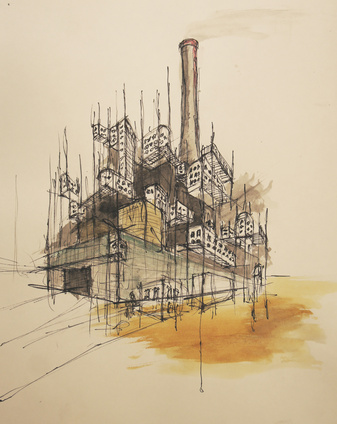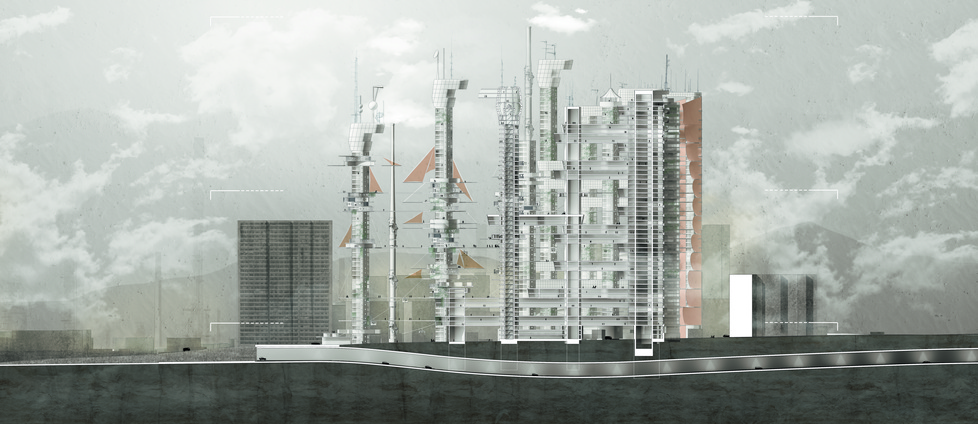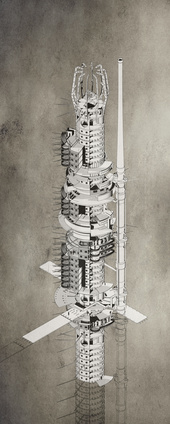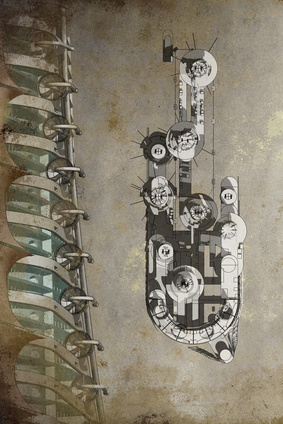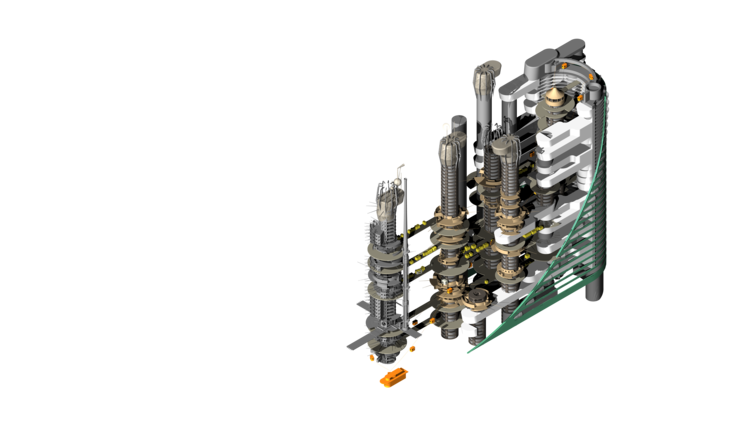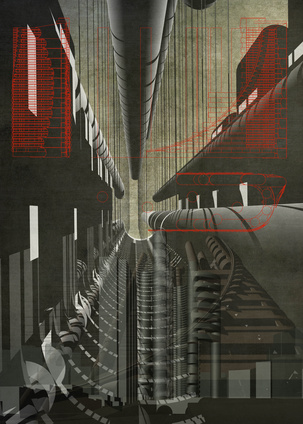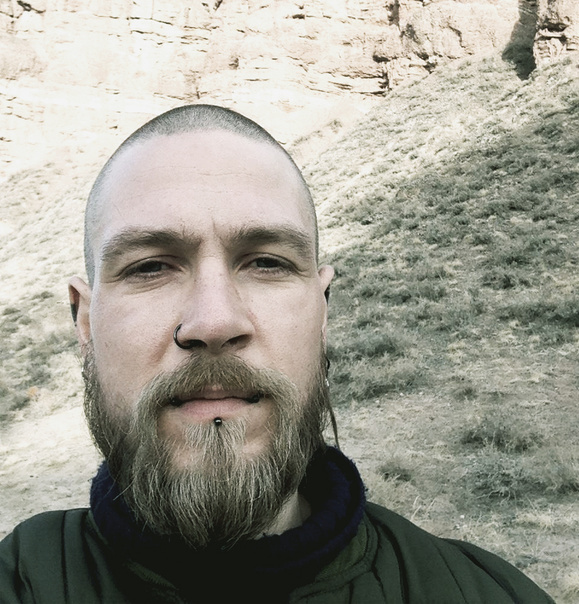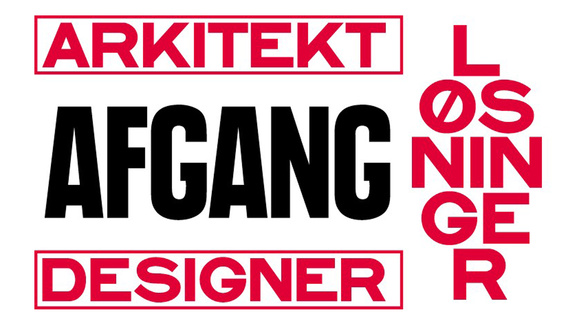Lanzhou is one of China’s most polluted cities. Dust from the Gobi desert and a large number of construction sites and manufacturing companies mean that every day the city’s inhabitants are exposed to massive air pollution. Meet the architect, Anders Cochet Svinkløv. In his final project he designed a building, which with a particular type of façade cladding can improve the quality of the air for the residents.
What is your final project about?
My final project, ‘ZERO BOUNDARY LINES’ is an alternative to the standardised skyscrapers that are currently being built all over China, The project was created for Lanzhou, a city in central China, which is hugely affected by air and dust pollution. It combines an ambition for cleaner air in the heavily polluted city with architecture that provides space for traditional rich street life and close neighbourly relations between residents.
To guarantee the residents of the building cleaner air, I designed a type of façade element, which can help to discard dust particles from the air by taking advantage of the way, in which shape and architecture can manipulate wind. Thereby, the residents in the building get cleaner air and better living conditions. In other words, my project combines the ambition for better air quality for the residents with the desire for architecture that can help to preserve the legacy of architectural and cultural values, at the same time transforming them into a new context.
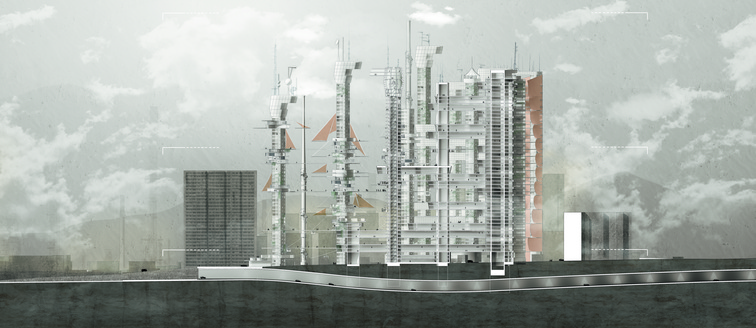
What was your motivation for this project in particular?
Throughout my studies I was concerned with how social conditions and architecture interact in an urban context. So often we see that overall town planning fails to relate to the climate that is created in and around architecture. This can be both the physical climate and the phenomenological climate. Meanwhile, I have always been interested in technical solutions, and love building and creating things with my hands. The project was an opportunity to combine my interests: to come up with some ideas on how architecture can solve some of the problems we face globally, at the same time commenting on some of the issues I think the profession neglects.
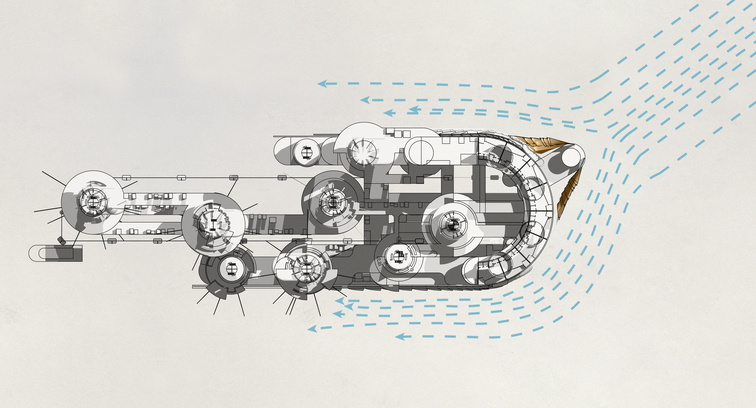
In what way does your project contribute something new to the area/subject you have been working on?
It expanded my architectural practice by entering the scientific field of aerodynamics and dust dispulsion. I tried to merge this with architecture, in which aesthetics and function interact with attitudes, ambitions and ideas.
Where do you imagine your degree project will make a difference?
I hope that my final project can contribute to the debate on how we develop cities in terms of the social and climatic challenges we encounter.
What methods did you use when working on your project?
At the start of my project my approach was very analogue. For example, I constructed a dust tunnel, in which I could test shapes and the properties of models in relation to collecting dust Later, I used various computer programmes to simulate how the wind behaves on the specific site in Lanzhou.
Before I went, as part of my course, Architecture and Extreme Environments, on a three-week field trip to Lanzhou, I had constructed two ‘kites’, into which I had incorporated some of the dust-collecting shapes I had come up with. These kites were a way of testing my feasibility studies in a site-specific context, but also a tool, with which I could study, and learn from the local conditions. My kite experiments also led to an immediate curiosity among the local inhabitants. This interaction created an opportunity to get closer to the local social conditions and gain an understanding of them.
During the project I was fortunate enough to have close contact with Zhou Yu, Professor at Lanzhou University of Technology. He gave me feedback on my technical solutions and also helped me understand much better the local, political and social conditions.
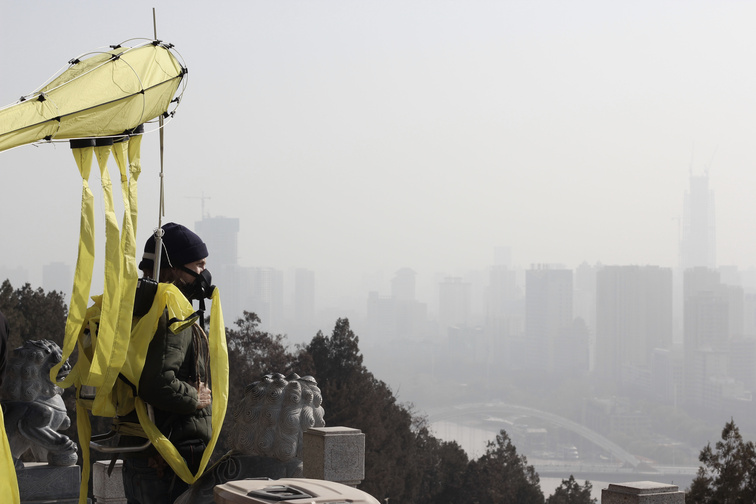
To which UN goals does your project relate, and why?
My project addresses global goal number 3 (Health and well being), number 9 (Industry, innovation and infrastructure) and number 11 (Sustainable cities and communities).
What are the most enjoyable and the most difficult aspects of the way you work on architecture?
As a student of architecture it is fun and liberating having the chance to work on technical solutions without actually having the professional background for it. There are of course people with aerodynamic skills that far exceed mine. But when, as an architect, you enter the field, it can help create a debate about how the architectural profession also needs to evolve, and about what ideas and issues need to be articulated. It can also lead to uncertainty and doubt when you move out of your usual professional boundaries. The work was hard, and there were times during the project when I felt on pretty shaky ground.
Can you see any employment opportunities in your degree project?
I absolutely believe that my project could be very relevant in terms of future job prospects. It would be great of some of the skills I developed in the course of the project could be implemented in a professional context.
After the opening of the KADK degree show, I was quite overwhelmed by the attention my project received. I was awarded the National Bank’s Jubilee scholarship and I have been contacted by several potential employers. It is very encouraging to see that the profession has an eye on new graduates and is interested in work on sustainability of both a climatic and social character.
What do you think is your greatest strength as a KADK architecture graduate?
have learned to work in a project-oriented way and to work on a project on various levels and on the basis of various parameters. A project can cover many values and issues, which can be viewed from different angles depending on the agenda you base your evaluation on. It is a strength to be able to see values and potential from several angles.
Where do you see yourself career-wise in five years’ time?
I think that architecture as a profession should contribute to the critique of where humanity and society are going. I would love to work in a field where I can use my professionalism to develop some of the solutions we are going to need in the future: solutions that can change, improve and influence the conditions, under which we live.


